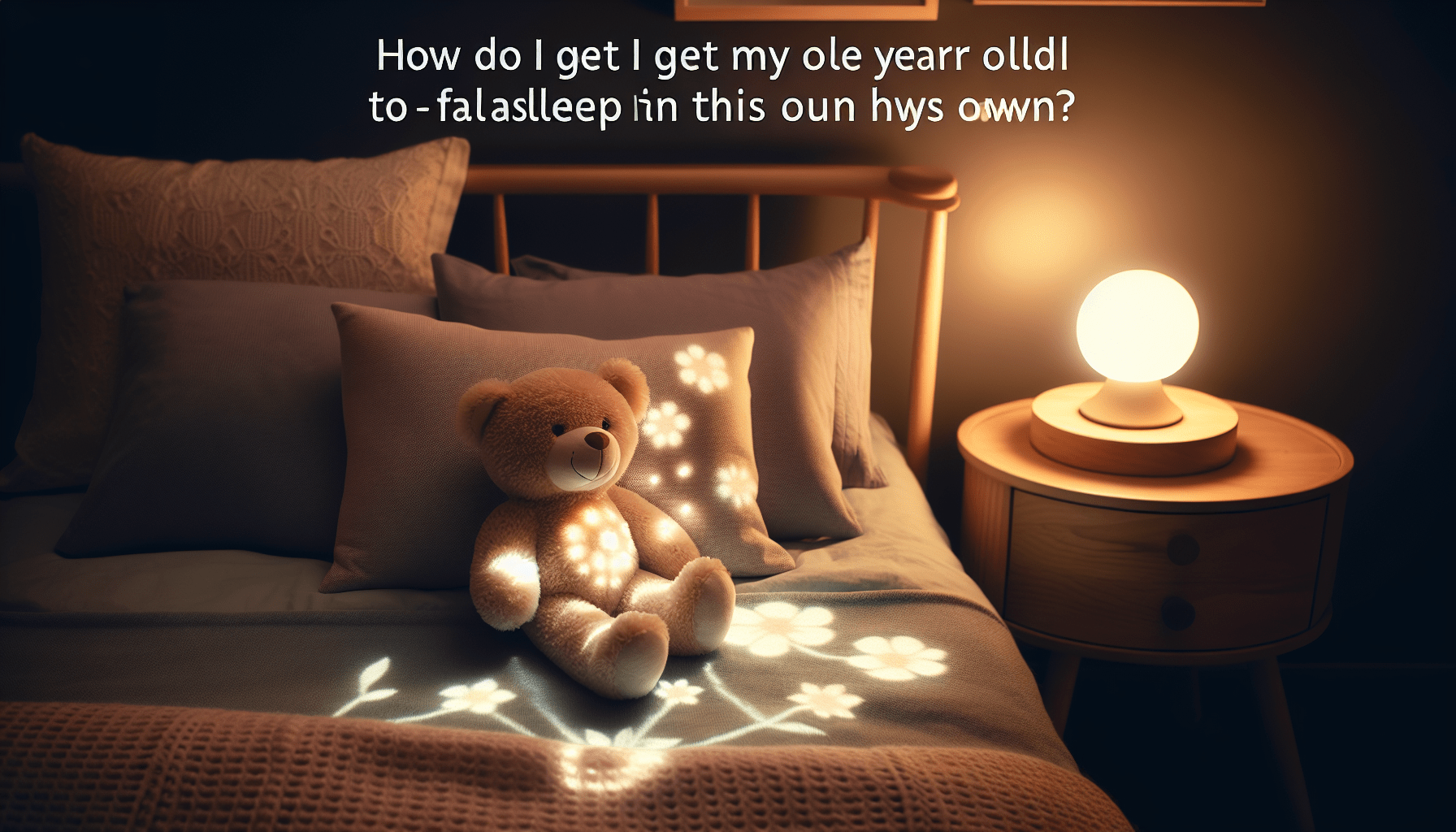Are you struggling to get your one year old to fall asleep on their own? It can be a common challenge for parents, but with a few helpful tips and techniques, you can help your little one develop healthy sleep habits. From establishing a bedtime routine to creating a peaceful sleep environment, there are many strategies you can try to encourage your child to drift off to dreamland on their own. With a little patience and consistency, you can help your one year old learn to fall asleep independently and enjoy a good night’s rest. How Do I Get My One Year Old To Fall Asleep On His Own?
Have you ever found yourself struggling to get your one year old to fall asleep on his own? It can be a tough battle, but rest assured, there are ways to help your little one develop healthy sleep habits. In this article, we will discuss some tips and techniques that can guide you on how to get your one year old to fall asleep independently.
Establish a Consistent Bedtime Routine
Setting up a consistent bedtime routine is crucial in teaching your one year old how to fall asleep on his own. Children thrive on predictability, and having a structured routine will signal to your little one that it’s time to prepare for sleep. Consider including activities such as a warm bath, reading a bedtime story, and dimming the lights to help create a calming atmosphere.
Tips:
- Choose activities that are soothing and relaxing to help wind down before bedtime.
- Be consistent with the timing of your bedtime routine to establish a sleep schedule for your child.
Create a Comfortable Sleep Environment
The sleep environment plays a significant role in helping your one year old fall asleep on his own. Make sure that the room is dark, quiet, and at a comfortable temperature to promote sleep. Use soft, breathable bedding and consider using a white noise machine to drown out any disruptive sounds that may prevent your child from falling asleep.
Tips:
- Ensure that your child’s sleep space is free from distractions such as toys or electronic devices.
- Invest in a quality mattress and pillows to provide a comfortable sleeping surface for your little one.
Encourage Self-Soothing Techniques
Teaching your one year old to self-soothe is key in helping him fall asleep on his own. Encourage your child to learn how to comfort himself by providing him with a favorite blanket or stuffed animal that he can cuddle with. You can also try implementing a gentle sleep training method that involves gradually reducing your intervention during bedtime.
Tips:
- Allow your child to practice self-soothing techniques such as sucking his thumb or rubbing a soft object against his face.
- Be patient and consistent in teaching your child how to fall asleep independently, as it may take time for him to learn this skill.
Implement a Bedtime Chart
Creating a visual bedtime chart can be a helpful tool in guiding your one year old towards falling asleep on his own. Include simple pictures or icons that represent each step of the bedtime routine, such as taking a bath, brushing teeth, and reading a story. This visual aid can help your child understand the sequence of bedtime activities and what is expected of him.
Tips:
- Engage your child in creating the bedtime chart to make it more interactive and engaging for him.
- Keep the chart displayed in your child’s room where he can easily see it before going to bed.
Address Any Sleep Associations
One common reason why one year olds struggle to fall asleep on their own is due to sleep associations. If your child has developed a dependency on external factors such as being rocked to sleep or nursed, it may be challenging for him to self-soothe. Gradually weaning your child off these sleep associations can help him learn how to fall asleep independently.
Tips:
- Start by gradually reducing the amount of time you spend rocking or nursing your child to sleep each night.
- Offer comfort and reassurance to your child in other ways, such as patting his back or singing a lullaby to help him relax.
Be Patient and Consistent
Above all, remember that teaching your one year old to fall asleep on his own is a process that requires patience and consistency. It’s normal for your child to resist change and test boundaries, but with gentle guidance and reassurance, he will eventually learn how to self-soothe and fall asleep independently. Stay positive, be consistent with your approach, and trust that your efforts will pay off in the long run.
Tips:
- Celebrate small victories along the way, such as your child falling asleep without your assistance for a few minutes.
- Keep a positive attitude and avoid becoming frustrated if your child struggles to fall asleep on his own initially.
In conclusion, helping your one year old learn how to fall asleep on his own is an essential step towards establishing healthy sleep habits. By implementing a consistent bedtime routine, creating a comfortable sleep environment, and teaching self-soothing techniques, you can guide your child towards becoming a more independent sleeper. Remember to be patient, stay consistent with your approach, and provide your little one with the support and reassurance he needs to succeed in developing this skill. With time and effort, your one year old will be on his way to falling asleep on his own and getting the rest he needs to grow and thrive.
